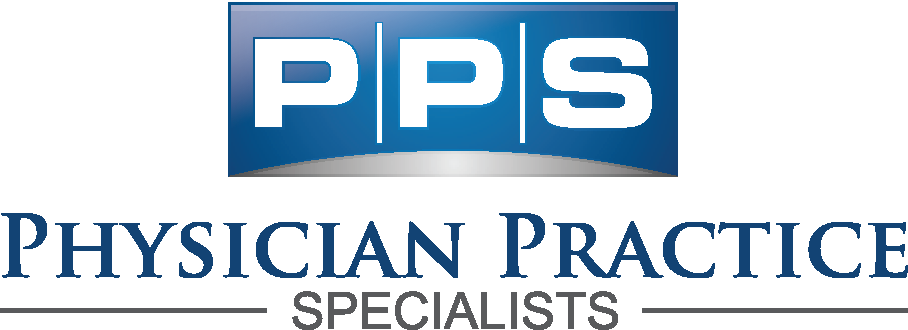As we approach the end of the year, we thought it would be helpful to provide some guidance related to the almost ubiquitous panel closure issue sweeping the nation. As if starting a practice isn’t difficult enough, you now need to worry about not even being offered a contract from major insurers due to panel closures. We understand that you may be reading this article and considering opening a new medical practice, you’ve also likely begun to question whether or not it’s such a good idea. With this, and our next three articles, we are going to do our best to equip you with the knowledge and strategy to deal with the panel closure issue.
Obviously, our hope is that you are opening your practice in an area where this won’t be an issue, but with 1 out of 5 practices we start encountering this, it’s definitely something that should be on your radar as you make plans for your new business. You might ask, is this the wrong time to start a new practice? The economy, with record low unemployment, rising wages and high consumer confidence say that now is an excellent time to start a practice. Unfortunately, record profits from the leading insurance companies such as UnitedHealth, hasn’t translated into opening doors to new providers in some markets.
“UnitedHealth Group raised its profit outlook for the rest of the year as its Optum health services business continues to treat more patients in a value-based approach to capture more market share.
In Q3, UnitedHealth raised its 2019 net earnings outlook to “a range of $14.90 to $15” compared to an earlier forecast that was raised this past summer thanks to growth across its insurance and Optum medical provider businesses. The raised guidance came as the nation’s largest health insurance company reported an 11% increase in third quarter profits to $3.54 billion. Revenues jumped nearly 7% to $60.4 billion” ( 2.,3.)
While it’s true that most of the panel closures by the big 5 (Anthem, Aetna, Cigna, Humana & UHC) is more prevalent in major metropolitans such as Miami, New York City, Philadelphia and Los Angeles, the payer’s restrictive practice has migrated from these major metros into the suburbs and even across entire states. For example, BCBS (Anthem), Aetna and UHC have had statewide panel closures in Florida for a couple years. While we’ve been successful in many cases seeing these panel closures reversed for our clients, it’s made the process incredibly challenging and time consuming. What should take 3-6 months is some times taking 1-2 years. The panel closure in Florida started with Pain Management due to the rampant abuse across the state but that wasn’t enough for the payers who in the past six months have actually refused to contract with providers that can fill major gaps in their network. This statewide panel closure practice has been adopted in other states but for the most part is limited to specific specialties. Provider types such as pediatric ophthalmology, neurosurgery, urology, pediatric dermatology, endocrinology and pediatric orthopedics have all been denied in the past 6 months. All of these specialties plus many more are categorically underserved in every market, just be so unfortunate to need one of these specialists and you’ll see how difficult it is to actually get an appointment that isn’t 6 months out. This article isn’t to gripe, well, not entirely at least. What I hope to cover are some ways/strategies around the panel closure issues. Unfortunately, due to other credentialing companies constantly stealing our content, we won’t be able to spell it out entirely lest we continue to educate our incompetent competition. For more in depth resources you can join our free LinkedIn group where we can answer specific questions you have and will provide further insight.
Here is what we will cover in the next few articles:
- The reasons behind panel closures- This Article
- How to find out if there are closed panels in my area? Next article 12/3
- Strategy to help ensure you open a financially viable practice and obtain those much needed insurance contracts – Third Article 1-22
- What can you do about panel closures? Final article 12/5
(Some of) The Reasons Behind Panel Closures
First, it’s important to note that we are will not cover specific specialties and the reasons behind their panel closures but are covering the universal trend towards restrictive networks. Panel closing really gained steam with the passing of the ACA. It started out as an effort to reduce administrative costs of these payers due to contracting revenue under the ACA(1.).
“While many health systems had major expense reduction initiatives underway, those efforts did not keep pace with revenue declines,” said analysis co-author Rulon Stacey, PhD, managing director and leader of Navigant’s Healthcare Strategy practice. “To reverse this operating performance trend, system management and boards must take a fresh look at their strategies based on the markets they serve, and size and target their offerings to actual market demand.”
Every new provider contract increases the administrative burden of a health plan both in its initial implementation and on-going management. All you need to do is research how many layoffs there have been over the past 5 years with these major payers. Their consolidation and cost-cutting initiatives have left many thousands, some on the verge of retirement, looking for new jobs. The cost cutting strategies with these payers and their subsequent reduced labor force, initially led to severe backlogs in credentialing and contracting and eventually yielded networks closed entirely to new practices.
Another part of their cost cutting strategy revolved around building “value-based”, narrow networks which took the form of EPOs(exclusive provider organizations) and revived or redesigned HMOs. These narrow networks have facilitated a reduction in costs and improvements in various quality metrics. The emphasis on measuring quality is certainly a noble cause, unfortunately when dealing with money, it hardly states noble for long. We have witnessed first-hand payers and MSOs dumping patients who due to their health and/or compliance, drive down these all too important quality scores. We understand that there is no panacea when it comes to healthcare, and that quality scores are vital, but we also recognize that an emphasis on quality without closely monitoring policies(whether written or understood) that restrict access, can and will have a devastating effect on the longterm health of our population. In addition to closed/narrow networks, the ever increasing deductible for patients is another major(and obvious) roadblock to patients receiving the care they need. It’s been proven through countless studies that the patients that need care the most are the patients that cannot absorb high deductibles. Research “The Iron Triangle of Healthcare” for more on this subject. (4.,5.). I understand that we have just scratched the surface of a very complex situation. My hope was not to bore you with so many details but was instead to provide you with a baseline understanding of what’s going on within the payers and some of the ways this will impact your practice. Stay tuned in the coming days for our subsequent articles on this topic.
- Four ways to find out which panels, if any, are closed in your area – Second Article Released on 12/3
- Probably circumnavigate panel closures. Ideas to ensure you open a financially viable practice. Coming Soon.
- What can you do about panel closures? Coming Soon
Reference:
- https://www.navigant.com/news/corporate-news/2018/hsom-analysis-2018
- https://www.fool.com/investing/2019/11/05/heres-why-cigna-humana-and-unitedhealth-group-soar.aspx
- https://www.forbes.com/sites/brucejapsen/2019/10/15/unitedhealths-profits-jump-as-optum-captures-more-patient-revenue/#55a7b008679d
- https://www.3mhisinsideangle.com/blog-post/the-iron-triangle-of-health-care-access-cost-and-quality/
- https://www.mdedge.com/ccjm/article/96587/practice-management/health-care-iron-triangle-and-patient-protection-and
Subscribe to receive future content delivered to your inbox


